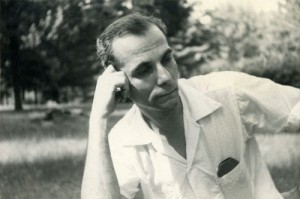Peter Hitchens reviews the latest jeremiad from Anthony Grayling in The Spectator, here:
‘Atheism is to theism,’ Anthony Grayling declares, ‘as not collecting stamps is to stamp-collecting’. At this point, we are supposed to enjoy a little sneer, in which the religious are bracketed with bald, lonely men in thick glasses, picking over their collections of ancient stamps in attics, while unbelievers are funky people with busy social lives.
But the comparison is flatly untrue. Non-collectors of stamps do not, for instance, write books devoted to mocking stamp-collectors, nor call for stamp-collecting’s status to be diminished, nor suggest — Richard Dawkins-like — that introducing the young to this hobby is comparable to child abuse. They do not place advertisements on buses proclaiming that stamp-collecting is a waste of time, and suggesting that those who abandon it will enjoy their lives more.
Professor Grayling is too pleased with himself to have realised this. Intoxicated with amusement at his own dud metaphor, he asks: ‘How could someone be a militant non-stamp-collector?’ I rather think he has written the manual for anyone who might like to take up this activity.
It strikes me, once again, that the new atheists – particularly Grayling, Dawkins, Dennett, and C. Hitchens – want to show the world that they can think for themselves, that they are beholden not to churchly prince nor earthly potentate, neither to ideology nor tradition, in the formulation and articulation of their own views. But thinking for themselves seems somehow insufficient to each of these people: they want also to think for everyone else, to impose on the rest of us their own personal view. Perhaps it’s that common affliction of people lacking in self-confidence: by getting others to adopt their judgments (or beliefs, or consumer purchases, or career path), they can validate their own choices.
As I have remarked before, in my experience most people who profess religious belief and/or undertake religious practices do so because of some personal, transcendant experience they have had with non-material realms, or what they perceive to be such realms. Grayling et al. tell all these people that they are each wrong: Here’s what you should believe, not the evidence of your own lying eyes! Who knows, our little Graylings may even be correct, and objective science may even – one day long in the future – show the delusion or invalidity of these many billions of subjective experiences. But, in the meantime, it surely takes industrial-strength levels of presumption to assume that your own personal subjective viewpoint takes precedence over the subjective lived experience of others.
Noticeable too, is the complete absence of any sense of wonder or awe at the unknown and the not-yet-explained in the writings of these folks (Sam Harris excepted). It is remark-worthy, I think, that none of these people are poets, or artists, or musicians, or mathematicians, all people who seek regularly to wrangle the transcendent. Gradgrinds the new atheists seem to be, as well as arrogantly presumptious.


